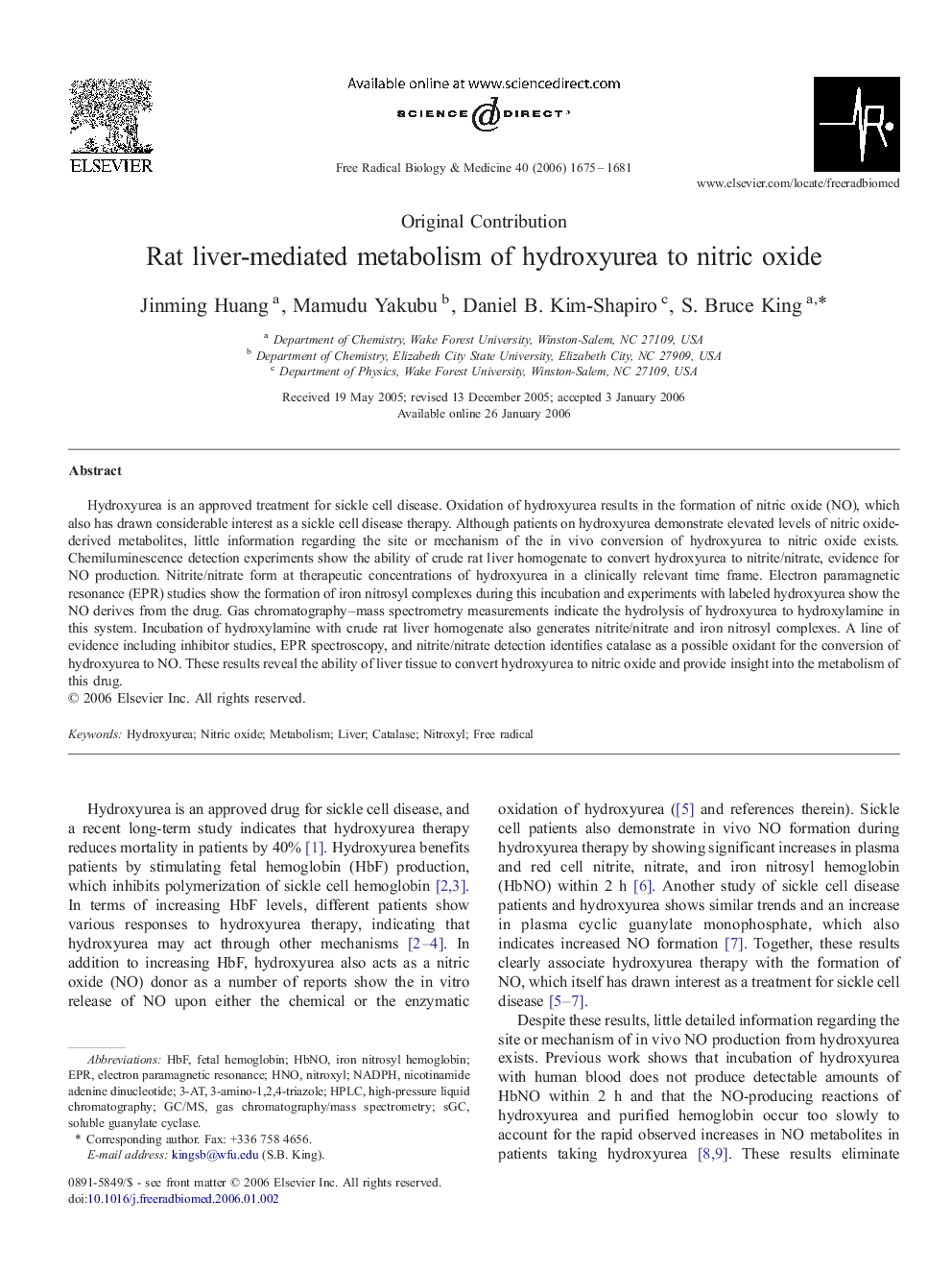| کد مقاله | کد نشریه | سال انتشار | مقاله انگلیسی | نسخه تمام متن |
|---|---|---|---|---|
| 1911426 | 1046816 | 2006 | 7 صفحه PDF | دانلود رایگان |

Hydroxyurea is an approved treatment for sickle cell disease. Oxidation of hydroxyurea results in the formation of nitric oxide (NO), which also has drawn considerable interest as a sickle cell disease therapy. Although patients on hydroxyurea demonstrate elevated levels of nitric oxide-derived metabolites, little information regarding the site or mechanism of the in vivo conversion of hydroxyurea to nitric oxide exists. Chemiluminescence detection experiments show the ability of crude rat liver homogenate to convert hydroxyurea to nitrite/nitrate, evidence for NO production. Nitrite/nitrate form at therapeutic concentrations of hydroxyurea in a clinically relevant time frame. Electron paramagnetic resonance (EPR) studies show the formation of iron nitrosyl complexes during this incubation and experiments with labeled hydroxyurea show the NO derives from the drug. Gas chromatography–mass spectrometry measurements indicate the hydrolysis of hydroxyurea to hydroxylamine in this system. Incubation of hydroxylamine with crude rat liver homogenate also generates nitrite/nitrate and iron nitrosyl complexes. A line of evidence including inhibitor studies, EPR spectroscopy, and nitrite/nitrate detection identifies catalase as a possible oxidant for the conversion of hydroxyurea to NO. These results reveal the ability of liver tissue to convert hydroxyurea to nitric oxide and provide insight into the metabolism of this drug.
Journal: Free Radical Biology and Medicine - Volume 40, Issue 9, 1 May 2006, Pages 1675–1681